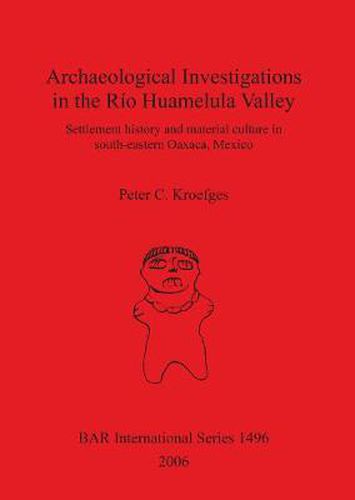Readings Newsletter
Become a Readings Member to make your shopping experience even easier.
Sign in or sign up for free!
You’re not far away from qualifying for FREE standard shipping within Australia
You’ve qualified for FREE standard shipping within Australia
The cart is loading…






This title is printed to order. This book may have been self-published. If so, we cannot guarantee the quality of the content. In the main most books will have gone through the editing process however some may not. We therefore suggest that you be aware of this before ordering this book. If in doubt check either the author or publisher’s details as we are unable to accept any returns unless they are faulty. Please contact us if you have any questions.
In contrast to traditional stereotypes of the prehispanic culture of the Chontals of Oaxaca, architectural sites and artifacts along the Pacific coast indicate that there were more complex societies, well integrated into southeastern Mesoamerican networks of socio-cultural, economic and political interaction. This research presents the results of surface surveys and test excavations at the Rio Huamelula, District of Tehuantepec, Oaxaca (southeastern Mexico), conducted by the author in 2001. The pottery classification aims at reconstructing the settlement chronology of the area from the Classic to the early Colonial periods, c. A.D. 300-1600. Stylistic traits of ball-game-related artifacts, sculptural art, pottery, and architecture, as well as obsidian composition analysis all point to an intensive socio-cultural and economic exchange between the prehispanic communities along the southeastern Oaxaca coast and other Mesoamerican societies. The ethno-linguistic identity of the Classic-period occupants of the Rio Huamelula valley remains enigmatic. The archaeological remains of two Postclassic Chontal villages, Huamelula and Astata, however, exhibit a socio-economic complexity contradicting the colonial characterization of Chontal culture. They further demonstrate a settlement continuity that, overall, reaches back into the Classic period and has lasted up to the present day.
$9.00 standard shipping within Australia
FREE standard shipping within Australia for orders over $100.00
Express & International shipping calculated at checkout
This title is printed to order. This book may have been self-published. If so, we cannot guarantee the quality of the content. In the main most books will have gone through the editing process however some may not. We therefore suggest that you be aware of this before ordering this book. If in doubt check either the author or publisher’s details as we are unable to accept any returns unless they are faulty. Please contact us if you have any questions.
In contrast to traditional stereotypes of the prehispanic culture of the Chontals of Oaxaca, architectural sites and artifacts along the Pacific coast indicate that there were more complex societies, well integrated into southeastern Mesoamerican networks of socio-cultural, economic and political interaction. This research presents the results of surface surveys and test excavations at the Rio Huamelula, District of Tehuantepec, Oaxaca (southeastern Mexico), conducted by the author in 2001. The pottery classification aims at reconstructing the settlement chronology of the area from the Classic to the early Colonial periods, c. A.D. 300-1600. Stylistic traits of ball-game-related artifacts, sculptural art, pottery, and architecture, as well as obsidian composition analysis all point to an intensive socio-cultural and economic exchange between the prehispanic communities along the southeastern Oaxaca coast and other Mesoamerican societies. The ethno-linguistic identity of the Classic-period occupants of the Rio Huamelula valley remains enigmatic. The archaeological remains of two Postclassic Chontal villages, Huamelula and Astata, however, exhibit a socio-economic complexity contradicting the colonial characterization of Chontal culture. They further demonstrate a settlement continuity that, overall, reaches back into the Classic period and has lasted up to the present day.